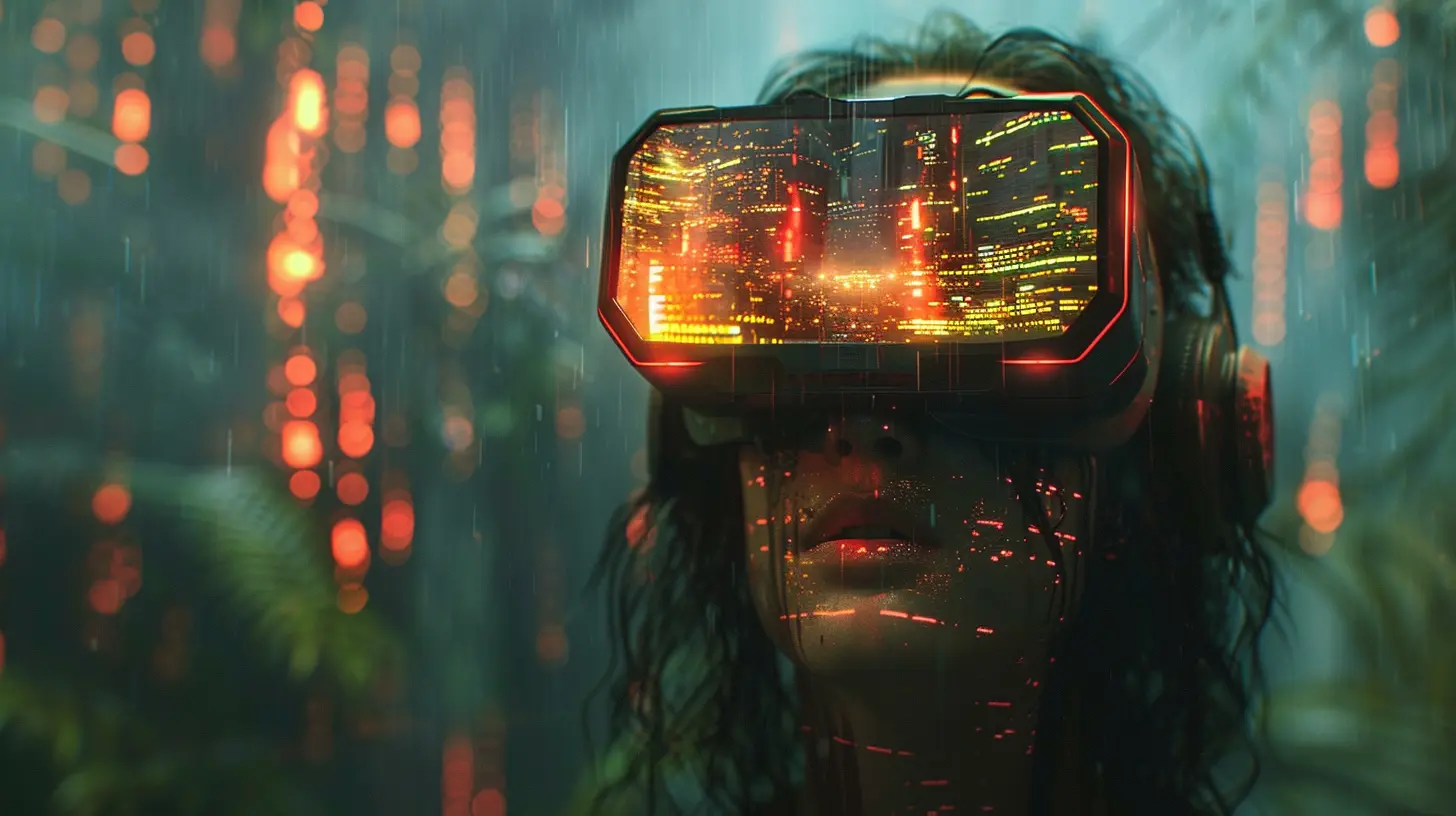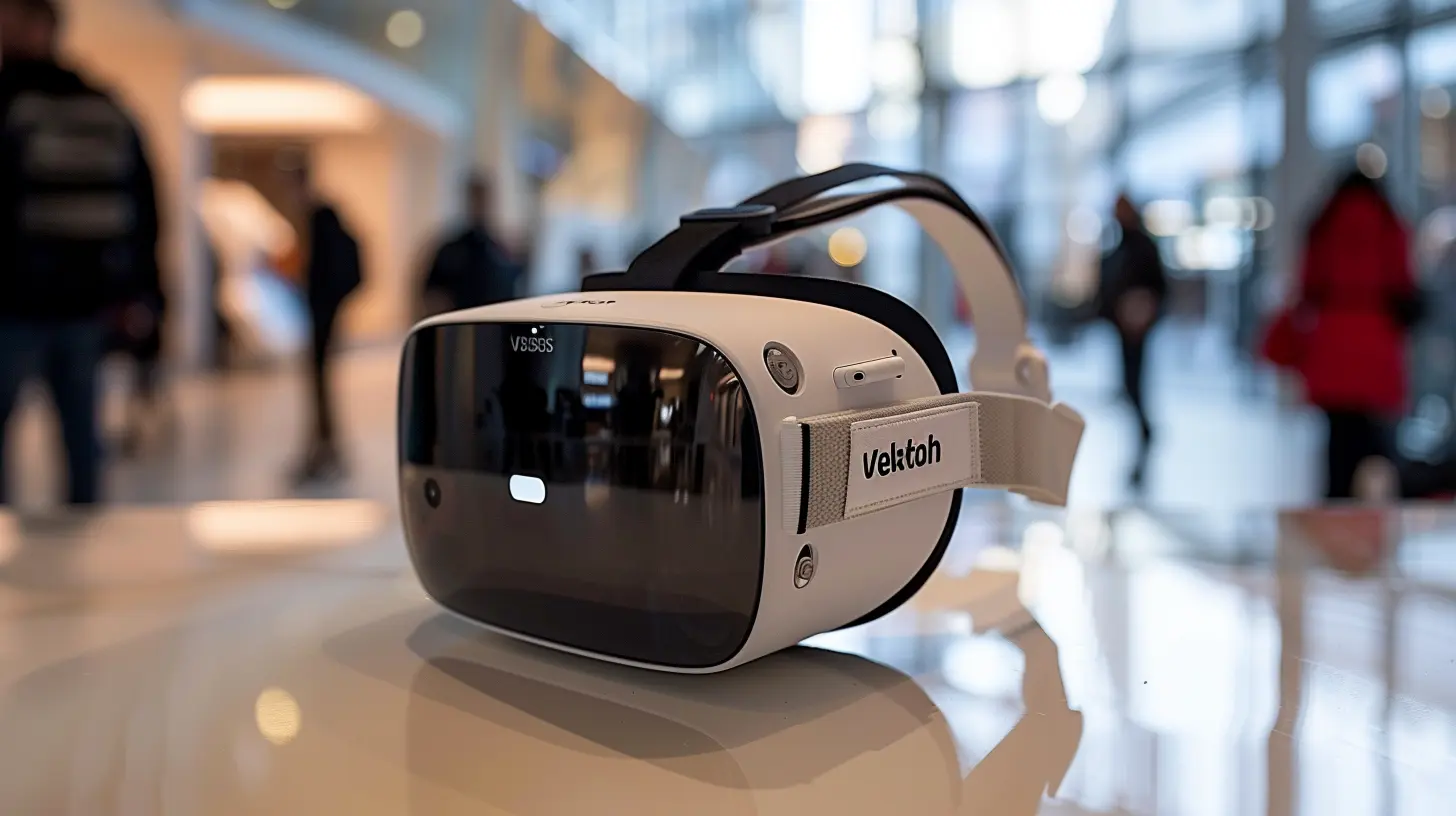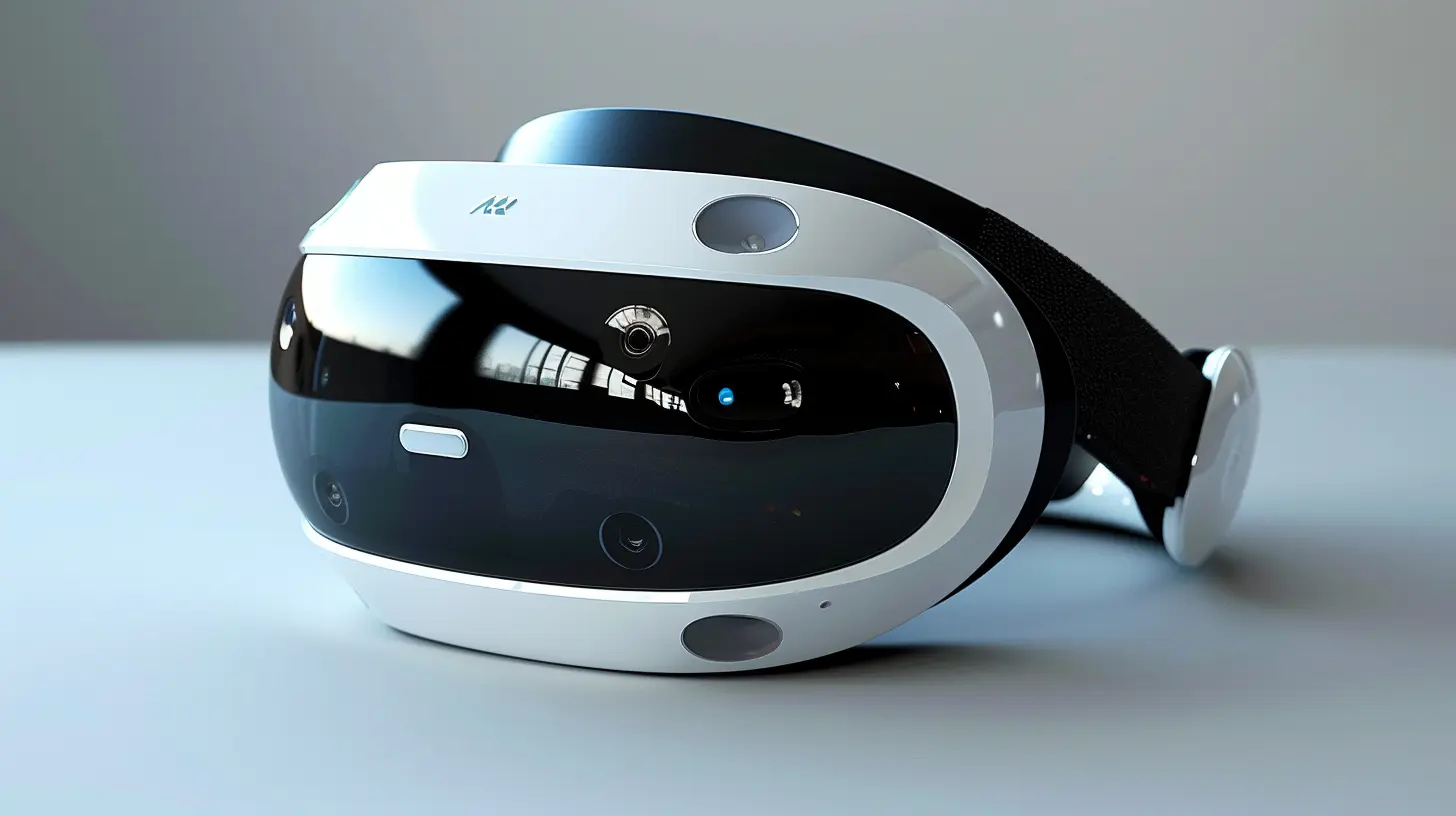VR Headsets and Augmented Reality: Blurring the Lines
16 June 2025
Virtual Reality (VR) and Augmented Reality (AR) are two of the most exciting developments in technology today. It feels like we’ve stepped into a realm once reserved for science fiction movies, right? Remember those movies where characters put on strange futuristic glasses or headsets and were instantly transported into another world? Fast forward to today, and it's not fiction anymore—it's our reality.
But here’s the million-dollar question: What exactly is the difference between VR and AR, and how are they blending together? More importantly, how are they shaping our future? Let’s dive into this immersive world and explore how VR headsets and augmented reality are blurring the lines between the virtual and the real.

What is Virtual Reality (VR)?
Okay, let’s start with the basics. Imagine you're sitting in your living room, but instead of being surrounded by your usual furniture, you’re suddenly standing on a beach in the Bahamas, or maybe you're flying a spaceship through a galaxy far away. That’s VR in a nutshell!Virtual Reality is a fully immersive experience where you’re "transported" to a different environment. When you put on a VR headset, your senses are tricked into believing that you're in a completely different world. Whether it's a game, a training simulation, or a virtual tour, VR creates a 360-degree digital environment that interacts with your movements and actions. You can look around, walk (or at least feel like you're walking), and interact with objects just like in the real world.
The key to this experience is the VR headset. It uses stereoscopic displays, sensors, and sometimes external cameras to track your movements, creating a sense of "presence" in the virtual world. Think of it like slipping on a pair of goggles that let you escape reality, if only for a little while.

What is Augmented Reality (AR)?
Now, AR is a little different. While VR pulls you completely into a virtual world, AR layers virtual elements onto the real world. You’re still fully aware of your surroundings, but now digital objects or information are superimposed over them.Ever played Pokémon Go? That’s a classic example of AR. You walk around the real world, but through your smartphone screen, you can see Pikachu hanging out in your backyard. AR enhances your current environment rather than replacing it.
AR can be experienced through various devices, including smartphones, tablets, and specialized AR glasses. Unlike VR, you don’t need to wear a bulky headset. Instead, AR seamlessly blends the digital and real worlds together, allowing you to interact with both at the same time.

VR Headsets: The Gateway to Another Dimension
Let’s talk hardware for a second. VR headsets are the backbone of the entire virtual reality experience. Without them, it’s like trying to watch a 3D movie without the glasses—just not the same, right?Types of VR Headsets
There are different types of VR headsets, and each serves its own purpose:1. Tethered Headsets: These are connected to a powerful PC or gaming console and provide the highest quality visuals and performance. Think Oculus Rift or HTC Vive. They give you a top-notch VR experience but can be pricey and require a lot of space.
2. Standalone Headsets: These are all-in-one devices that don’t need a computer or console. Something like the Oculus Quest 2 falls into this category. The best part? You get a wireless experience with decent performance at a more affordable price.
3. Mobile VR Headsets: These are the most accessible. They use your smartphone as the screen—think Google Cardboard or Samsung Gear VR. While they’re great for casual use, the experience isn’t quite as immersive as tethered or standalone options.
How VR Headsets Work
VR headsets use a combination of lenses, displays, and sensors to create that immersive experience. Here's a quick breakdown:- Lenses: These help project the images from the display into your eyes, creating a sense of depth and three-dimensional space.
- Motion Tracking: Headsets have sensors (gyroscopes, accelerometers, etc.) that track your head movements. In some cases, external cameras or sensors are used to track your position in the room.
- Controllers: Many VR systems come with handheld controllers that let you interact with the virtual world. Whether you're grabbing objects, shooting enemies, or drawing in 3D space, the controllers make it feel natural.

Augmented Reality: Bringing the Digital World to Life
AR may not be as immersive as VR, but it’s arguably more practical for everyday use. Imagine walking down the street, and your glasses show you directions, restaurant reviews, or even translations of foreign signs. That’s the magic of augmented reality.AR Glasses: The Next Frontier
While VR headsets are all about total immersion, AR glasses are designed to enhance our interaction with the real world. These devices overlay digital information onto your field of view, providing real-time data, graphics, or 3D objects that you can interact with.Tech companies like Microsoft, Google, and Apple are pouring billions into AR development. Microsoft’s HoloLens, for instance, is one of the most advanced AR devices on the market. It allows users to interact with holograms, making it a popular tool in industries like healthcare, education, and engineering.
Everyday Uses of AR
AR isn’t just for tech enthusiasts. It’s already creeping into our everyday lives in ways you might not even realize:- Shopping: Imagine trying on clothes or furniture virtually before you buy them. Many retailers, like IKEA and Sephora, are using AR to let customers preview products in their own space.
- Navigation: Google Maps now offers AR navigation, showing you exactly where to go by overlaying arrows and markers on real-world streets.
- Education: AR can bring textbooks to life. Imagine scanning a page in your biology book and seeing a 3D model of a human heart beating right in front of you.
Where VR and AR Meet: Mixed Reality (MR)
Now, here’s where things get really interesting. The lines between VR and AR are starting to blur, and the result is something called Mixed Reality (MR). In MR, real and virtual worlds collide, allowing digital and physical objects to interact in real time.Mixed Reality is like a hybrid of VR and AR. You’re still aware of the real world, but virtual objects are not just overlaid—they’re integrated. You can interact with virtual objects as if they were physically present in your environment. For example, you could place a virtual chessboard on your real coffee table and play against an AI opponent.
Some of the most advanced MR headsets, like Microsoft’s HoloLens or Magic Leap, are pushing the boundaries of what’s possible by blending the best of both VR and AR worlds.
The Future of VR and AR: Blurring the Lines
So, where are we headed with all of this? It’s clear that VR and AR are not just fads—they’re foundational technologies that will reshape everything from entertainment to education and beyond.Gaming and Entertainment
In gaming, VR has already revolutionized the way we play. Imagine stepping into the shoes of your favorite video game character, not just controlling them with a joystick. With advancements in haptics (touch feedback) and motion tracking, we’re getting closer to truly "feeling" the virtual world.AR is also making waves in the entertainment industry. Interactive experiences, like AR concerts or theme park rides, are already becoming more common. Soon, you might be able to attend a concert where digital avatars of your favorite artists perform live in your living room.
Work and Collaboration
You’ve probably heard the term "metaverse" thrown around a lot lately. This is where VR and AR are expected to merge the most. In the future, we could all be working, socializing, and collaborating in virtual spaces. Instead of video calls, imagine sitting in a virtual boardroom with your coworkers, even if they’re halfway across the globe.With AR, we could see practical applications in industries like construction, healthcare, and education. Doctors could use AR during surgery to see critical data without taking their eyes off the patient. Architects could walk through a digital blueprint of a building on-site, seeing exactly where everything will go.
Challenges Ahead
Of course, there are still hurdles to overcome. VR headsets can be bulky, expensive, and cause motion sickness for some users. AR glasses face challenges with battery life and display quality. But as technology improves, these issues will likely fade away, making immersive experiences even more accessible.Conclusion: The Future is (Virtually) Here
VR and AR are no longer concepts of the future—they’re here, and they’re changing the way we experience the world around us. Whether you're diving headfirst into a fully immersive VR game or using AR to see how that new couch will look in your living room, these technologies are blurring the lines between what’s real and what’s digital.As we move forward, the distinction between the virtual and the real will continue to blur, and one day, we may not even notice the difference. So, are you ready to strap on a VR headset or put on a pair of AR glasses? The future is waiting, and it’s more immersive than ever.
all images in this post were generated using AI tools
Category:
Vr HeadsetsAuthor:

Jerry Graham
Discussion
rate this article
2 comments
Azriel McConkey
Exciting times ahead for immersive technology experiences!
June 17, 2025 at 2:31 AM

Jerry Graham
Thank you! We're thrilled about the potential of immersive technology to transform our experiences. Stay tuned for more innovations!
William Griffin
Reality fades; experiences redefine human connections.
June 16, 2025 at 10:46 AM

Jerry Graham
Thank you for your insightful comment! It's true that as technology evolves, our understanding of reality and connections may transform, highlighting the profound impact of VR and AR on human relationships.


